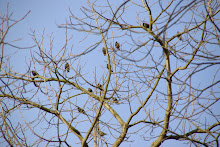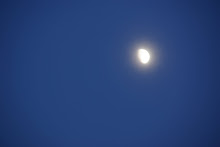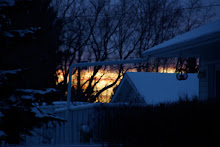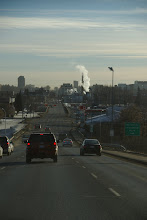Sunday, October 4, 2009
Saturday, October 3, 2009
The Black Comedy - Spoiler Alert !!
The Black Comedy is a one act play written by Peter Shaffer. It's currently a production of the Arts Club Theatre Company and is being put on at the Stanley Industrial Stage. I must say, this was one of the best plays that I have seen in years. I was completely blown away by the artistic elements, the lighting, the acting, directing, sound, and the stage set.
Lets start with the lighting. The actors come on stage, the audience goes quiet, we can see the silhouettes of the set. The actors begin speaking – no light – the actors talk some more, still no light. We hear them moving around, and it feels like they talk forever and I wonder: is this a mistake? Do the people in the tech booth not realize the play has started? I cannot imagine what kind of brilliance will justify the first ten minutes of the play being conducted in darkness. And then it happens, the lights go on and I understand and it is perfectly justified and fantastic. I thought the title was referring to the type of comedy in the play, it did not occur to me that it had two meanings, the second of which referred to the fact that the events of the play were actually taking place in the dark. And of course the only way for this to work would be to have the actors pretend it was dark when it was light, and vice versa. What a great plan. So the lighting was a huge element in this play and it was carried out with a master's care. Within a few moments the audience was aware of the ground rules: when the lights are on the actors are in a black out, when the lights go out the actors can see, when someone has a match or a lighter or a flash light the lighting on stage is a soft bluish halo.
Of course the lighting could have been perfect and it would make no difference if the actors could not pull it off, but they could and they did. When the lights were on, the actors had their roles down pat and still managed to be funny, extremely evocative and truthful in their performances. Their eyes were popped open as if trying to find their way in a pitch black room. When saying their lines they often had to look in directions other than where the actor they were talking to was. They had to walk around the stage in the light as if it was darkness and the only way they could pull this off was by never looking directly at what they were doing, or where they were going, or who they were talking to. Rather for most of the play, they felt their way around the room as if they had lost one of their senses. And it never fell through.
Of course, the lighting and acting alone would not be able to carry this play. The directing was integral. Each tiny little movement had to be staged to perfection and mapped out exactly so that when Brindsley was busy trying to move the furniture he had stolen from Harold Gorringe back to Gorringe's apartment, and his foot was one inch away from Gorringe and his arm one inch away from Miss Furnival, not a thing could go wrong. There was so much physical comedy written right into the script that every actor's action had to be memorized to the inch, and still performed in a way that seemed new and fresh.
Finally the set design. The set design was so intricate I felt like it was actually a real apartment. There was a whole living room space on the lower floor as well as a working studio. The bedroom was on the second level. Newspapers were used as wall paper. Through the door of the apartment you could see the open door of Gorringe's apartment. This was really important to the play as for a lot of it, Brindsley was going back and forth between his own and Gorringe's apartment, so we had to believe there was another apartment. And there was a fully built hallway between Gorringe's and Brindsley's apartment.
The Arts Club Theatre's performance of the Black Comedy was worth every second and every penny of the price of the ticket! Although the Arts Club's execution of the play was very impressive, I was surprised to learn that so much had actually been written into the script itself. After the play ended, the actors held a 'talk back' session in which they answered questions from the audience. They revealed that a lot of what I thought had been amazing directing and set and lighting design was actually written directly into the script. At one point Brindsley struggles with the cord of a lamp on stage left, while Gorringe and Miss Furnival have a conversation on stage right. The script directions actually tell the actors not to be concerned if the audience laughter and Brindsley's actions overshadow their dialogue. Seeing this play made me think a lot about the intricacy of weaving together a good piece of work for the stage. There are so many more things I'd love to say about Black Comedy, but I'll leave it at this, if you have not seen it, go!
Friday, October 2, 2009
Saturday, September 12, 2009






